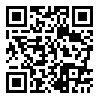Volume 14, Issue 2 (2023 2023)
JIM 2023, 14(2): 163-184 |
Back to browse issues page
Download citation:
BibTeX | RIS | EndNote | Medlars | ProCite | Reference Manager | RefWorks
Send citation to:



BibTeX | RIS | EndNote | Medlars | ProCite | Reference Manager | RefWorks
Send citation to:
ebadi A, gilani N. (2023). Religious and economic function of Sheikh Ahmad Jami's miracles in the Seljuk period. JIM. 14(2), 163-184. doi:https://doi.org/10.22034/15.28.163
URL: http://erfanmag.ir/article-1-1290-en.html
URL: http://erfanmag.ir/article-1-1290-en.html
Ferdowsi University of Mashhad
Abstract: (1300 Views)
Sheikh Ahmad Jami, nicknamed " Zhende Peel ", was one of the famous mystics of the Seljuk era who was born in the village of "Namaq" and established a monastery in Torbat Jam. Through his Miracles and teachings, he played a great role in the social, religious and economic developments of Torbat-e Jam. His role has been so influential that even today his tomb is considered one of the most famous shrines of his disciples and lovers. One of the strategies of the Sufi sects to attract more disciples and suppress the opposition was to use the sheikh's superhuman power or Miracles. Mentioning the miracles of mystics is not just a story for the entertainment and joy of the disciples; Rather, it became a discourse that the Sufis used to pursue various interests, including religious and economic. The basis of this research is the book "Maghamat of Zhende Peel" written by Mohammad Ghaznavi, which describes the miracles of the life of Sheikh Ahmad Jam (d. 536 data and sources shows that religiously Sufi sects used the Miracles discourse against religious and manner rivals to persuade opponents and disciples. Economically, with the significant growth of the number of monasteries and disciples from the Seljuk period (529-429 AH), Providing daily necessities required vast financial resources. This provision to links with various social and political groups. Karamat was also a good tool for voluntary acceptance of financial aid from these groups.
Type of Study: Research |
Subject:
تصوف و عرفان
Received: 2021/04/14 | Accepted: 2021/06/8 | Published: 2023/06/7
Received: 2021/04/14 | Accepted: 2021/06/8 | Published: 2023/06/7
Send email to the article author
| Rights and permissions | |
 |
This work is licensed under a Creative Commons Attribution-NonCommercial 4.0 International License. |



